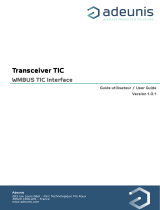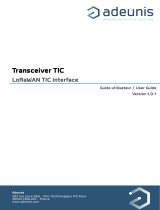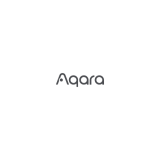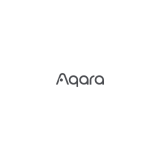Landis Gyr AXei-SD Smart Meter for Landis+Gyr Manuel utilisateur
- Catégorie
- Antennes réseau
- Taper
- Manuel utilisateur

AXei
FCC and IC
Compliance Manual
Rev AB
© Landis+Gyr 2020 | Proprietary + Confidential

2
Limitation on Warranties and Liability
Information in this document is subject to change without notice. This manual or any part of it thereof
may not be reproduced in any form unless permitted by contract or by written permission of
Landis+Gyr.
In no event will Landis+Gyr be liable for any incidental, indirect, special, or consequential damages
(including lost profits) arising out of or relating to this publication or the information contained in it,
even if Landis+Gyr has been advised, knew, or should have known of the possibility of such
damages.
Covered by both issued and pending patents.
For further patent information see: https://www.landisgyr.com/about/patent-notices/
© 2020 Landis+Gyr, Inc. | Proprietary + Confidential
Contact Us:
To provide feedback about this document, email us at ustechnicaldocumentat[email protected]
Technical Support: 1-888-390-5733 | solut[email protected]

Gridstream RF, Series 5, AXei
FCC and IC Compliance Manual
Introduction
The AXei PCB contains two radios, a Zigbee radio and a Sub-GHz radio. The Zigbee radio on the
AXei PCB is certified for modular approval.
The Sub-GHz radio is the S5-MCMO module. This radio complies with modular approval by
itself and has its own FCC and IC IDs. The S5-MCM0 is compatible with Landis+Gyr Gridstream
RF, Series 5 radios, operating in the unlicensed sub-GHz frequency range of 902 – 928 MHz.
The S5-MCM0 module comes as a component on reel, conforming the LGA surface mount
package, and is intended to be placed on a host board using pick-n-place technologies.
Both the Zigbee and the Sub-GHz radios are RF shielded metal shields as shown in the pictures
below.

4
ZigBee S5 MCM0
Figure 1. AXei PCBA

PCB F trace antenna is designed as part of the AXei host board for the Zigbee and SM-MCM0
radios, see the picture below. Refer to the D1432 PCB design file for the specific dimensional
details. Each transmitter is certified with the intended trace antenna on the host board.
ZigBee Antenna S5 MCM0 Antenna
Figure 1. Antennas
The AXei PCB is designed to be mounted inside of the AXei meter forms specified in the table
below, as final host. The PCB is mounted inside of the meter as shown in the picture below.

6
Figure 2. AXei PCB installation view
Figure 3. Representative meter

Host and Radio Characteristics
The table below contains information on the final host and the radios.
Table 1. Host and radio characteristics
Category
Specification
Value or Range
Compatible Meters
Supported Meter Forms
Form
Voltage
Class
1S
120V
100A
240V
2S
240V
200A
320A
3S
120V
20A
240V
4S
240V
20A
12S
120V
200A
240V
320A
25S
120V
200A
240V
320A
Electrical
Voltage
As listed above ±20%
Typical Burden (Rx at nominal voltage)
Less than 3.0 VA
900 MHz Radio
(S5-MCM0)
Output Power
+27 dBm (500 mW) Max
Transmit Frequency
902.2 - 927.8MHz
Communication Protocol
Frequency Hopping Spread Spectrum
Receive Sensitivity
-103 dBm to - 113 dBm (9.6 kbps to 115.2
kbps)
Data Rates
9.6 - 115.2 kbps
Modulation
2-FSK and 2-GFSK
RF ZigBee
Output Power
+20 dBm Max
Transmit Frequency
2405-2475 MHz
Communication Protocol
ZigBee Protocol
Receive Sensitivity
-104 dBm typical
Environmental
Operating Temperature Range
-40 to +85C (under cover)
Humidity
95% relative humidity, non-condensing

8
Federal Communications Commission (FCC) Compliance
Notice
This device complies with Part 15 of the FCC rules. Operation is subject to the following two
conditions:
1. This device may not cause harmful interference, and
2. This device must accept any interference received, including interference that
may cause undesired operation.
This equipment has been tested and found to comply with the limits for a Class B digital
device, pursuant to Part 15 of the FCC Rules. These limits are designed to provide
reasonable protection against harmful interference in a residential installation. This
equipment generates, uses, and can radiate radio frequency energy and, if not installed
and used in accordance with the Instructions, may cause harmful interference to radio
communications. However, there is no guarantee that interference will not occur in a
particular installation. If this equipment does cause harmful interference to radio or
television reception, which can be determined by turning the equipment off and on, the user
is encouraged to try to correct the interference by one or more of the following measures:
• Reorient or relocate the receiving antenna.
• Increase the separation between the equipment and receiver.
• Consult Landis+Gyr or an experienced radio technician for help.
WARNING: Changes or modifications to this device not expressly
approved by Landis+Gyr could void the user’s authority to operate the
equipment.
Industry Canada (IC) Compliance Notice
This device complies with Industry Canada license-exempt RSS standard(s). Operation is subject
to the following two conditions: (1) this device may not cause interference, and (2) this device
must accept any interference, including interference that may cause undesired operation of the
device.
Le présent appareil est conforme aux CNR d'Industrie Canada applicables aux appareils radio
exempts de licence. L'exploitation est autorisée aux deux conditions suivantes : (1) l'appareil e
doit pas produire de brouillage, et (2) l'utilisateur de l'appareil doit accepter tout brouillage
radioélectrique subi, même si le brouillage est susceptible d'en compromettre le
fonctionnement.
Under Industry Canada regulations, this radio transmitter may only operate using an antenna of
a type and maximum (or lesser) gain approved for the transmitter by Industry Canada. To

reduce potential radio interference to other users, the antenna type and its gain should be so
chosen that the equivalent isotropically radiated power (e.i.r.p.) is not more than that
necessary for successful communication.
Conformément à la réglementation d'Industrie Canada, le présent émetteur radio peut
fonctionner avec une antenne d'un type et d'un gain maximal (ou inférieur) approuvé pour
l'émetteur par Industrie Canada. Dans le but de réduire les risques de brouillage adioélectrique
à l'intention des autres utilisateurs, il faut choisir le type d'antenne et son gain de sorte que la
puissance isotrope rayonnée équivalente (p.i.r.e.) ne dépasse pas l'intensité nécessaire à
l'établissement d'une communication satisfaisante.
RF Exposure
This equipment complies with FCC radiation exposure limits set forth for an uncontrolled
environment. This equipment should be installed and operated with a minimum distance of 20
cm between the radiator and your body. This transmitter must not be co-located or operated in
conjunction with any other antenna or transmitter.
Cet équipement est conforme aux limites FCC d'exposition aux radiations définies pour un
environnement non contrôlé. Cet équipement doit être installé et utilisé à une distance
minimale de 20cm entre le radiateur et votre corps. Cet émetteur ne doit pas être co-
implantés ou exploités en conjonction avec une autre antenne ou émetteur.
FCC and IC Label Requirements
The AXei Zigbee radio is certified as limited modular approval. In the final assembly or host, a
label with the following information must be visible on the outside.
CONTAINS FCC ID: R7PNG0R1S7
CONTAINS IC: 5294A-NG0R1S7
CONTAINS FCC ID: R7PEG1R2X6
CONTAINS IC: 5294A-EG1R2X6
The figure below demonstrates a label that complies to the labeling requirement for a host.
Figure 4. AXei meter label
-
 1
1
-
 2
2
-
 3
3
-
 4
4
-
 5
5
-
 6
6
-
 7
7
-
 8
8
-
 9
9
Landis Gyr AXei-SD Smart Meter for Landis+Gyr Manuel utilisateur
- Catégorie
- Antennes réseau
- Taper
- Manuel utilisateur
dans d''autres langues
Documents connexes
Autres documents
-
Aruba AP-515 Guide d'installation
-
Sengled ZM002 Mode d'emploi
-
Cisco C9117AXI-x Getting Started Manual
-
 ADEUNIS TIC / V1.0.1 Mode d'emploi
ADEUNIS TIC / V1.0.1 Mode d'emploi
-
 ADEUNIS TIC / V1.0.1 Mode d'emploi
ADEUNIS TIC / V1.0.1 Mode d'emploi
-
 Aqara Hub M1S Gen 2 Smart Home Control Center Mode d'emploi
Aqara Hub M1S Gen 2 Smart Home Control Center Mode d'emploi
-
Horizon Hobby HBZ5305 Manuel utilisateur
-
 Aqara HM1S-G01 для умного дома M1S Manuel utilisateur
Aqara HM1S-G01 для умного дома M1S Manuel utilisateur
-
Aqara Hub Mode d'emploi












